Class Aves
Order Columbiformes
Family Columbidae
Ectopistes migratorius—Passenger Pigeon // Patagioenas fasciata—Band-tailed Pigeon // Patagioenas micula—Curtis Dove // Zenaida sp.—Zenaida Doves // Zenaida macroura—Mourning Dove
The family is distributed worldwide, with half a dozen or so species in our region (including the introduced Rock Pigeon so common around towns and cities). Most habitats in our region support one or more species.
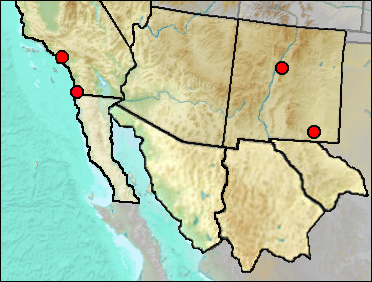
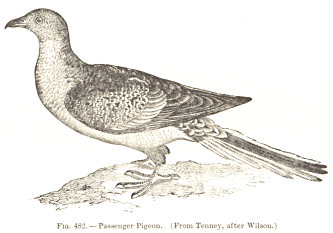 The
Passenger Pigeon became extinct early in the last century. It was primarily an eastern
species dependent largely on mast for food, but has been reported as fossil as far west
as the West Coast. There are Holocene records from Picuris and Una Vida archaeological
sites in northern and northwestern New Mexico.
The
Passenger Pigeon became extinct early in the last century. It was primarily an eastern
species dependent largely on mast for food, but has been reported as fossil as far west
as the West Coast. There are Holocene records from Picuris and Una Vida archaeological
sites in northern and northwestern New Mexico.
Fig. 1. Passenger Pigeon (Coues 1903).
Sites.
Wisconsin: Glen Abbey, Bonita (Majors 1993).
Mid/Late Wisconsin: Dark Canyon Cave (Howard 1971); Rancho La Brea (Stock and Harris 1992).
Late Wisconsin: Sandia Cave (Brasso and Emslie 2006: Cf. gen. et sp.).
Literature. Brasso and Emslie 2006; Coues 1903; Howard 1971; Majors 1993; Stock and Harris 1992.
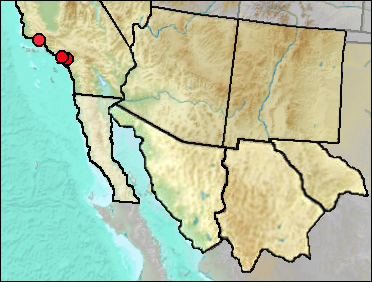
Sites.
?Late Irvingtonian/Rancholabrean: Emery Borrow Pit (Jefferson 1991a).
Wisconsin: Carpinteria (Guthrie 2009).
Mid/Late Wisconsin: Rancho La Brea (Stock and Harris 1992).
Literature. Guthrie 2009; Jefferson 1991a; Stock and Harris 1992.
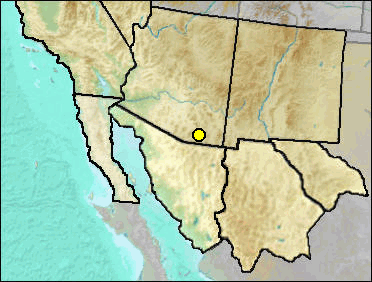
Synonyms. Chloroenas micula, Columba micula.
A small member of the genus Patagioenas.
Sites. Late Blancan: Curtis Ranch (Wetmore 1924).
Literature. Wetmore 1934.
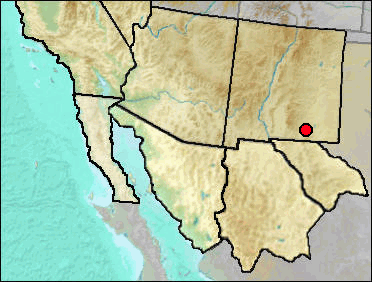
Synonyms. Zenaidura
Two species occur in our region: the White-winged Dove (Zenaida asiatica) and the Mourning Dove (Z. macroura). The former is primarily a species of lower elevations in southern and eastern New Mexico, in the Trans-Pecos, and in southern and western Arizona. The latter is ubiquitous.
Sites. Early/Early-Mid Wisconsin: Sabertooth Camel Maze (Harris 1993c: cf.).
Literature. Harris 1993c.
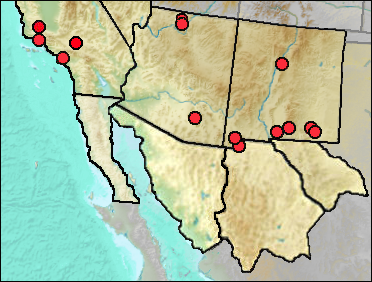
Synonyms. Zenaidura macroura
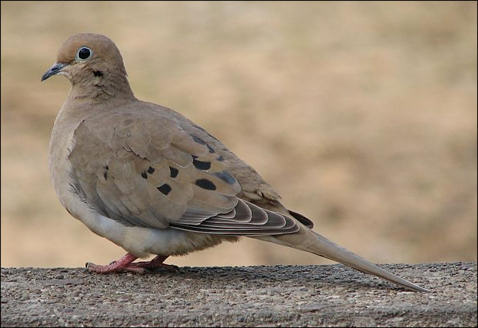 This species is widespread in North
America at present and inhabits our area year around. It is a common dove of the
lowlands and may occur up to 13,000 ft. in summer.
This species is widespread in North
America at present and inhabits our area year around. It is a common dove of the
lowlands and may occur up to 13,000 ft. in summer.
Fig. 1. Mourning Dove. Photograph by Trisha Shears.
Sites.
Rancholabrean: Helendale (Jefferson 1991a).
Wisconsin: Carpinteria (Guthrie 2009).
Early/Early-Mid Wisconsin: Rm Vanishing Floor (Harris 1993c).
Mid Wisconsin: McKittrick (Jefferson 1991a); Pendejo Cave (Harris 2003); U-Bar Cave (Harris 1987).
Mid/Late Wisconsin: Dark Canyon Cave (Howard 1971); Hampton Court (Harris 1993c); Rancho La Brea (Stock and Harris 1992); Sandblast Cave (Emslie 1988).
Mid Wisconsin-Holocene: Shelter Cave (Howard and Miller 1933).
Late Wisconsin: Sandia Cave (Brasso and Emslie 2006);
Late Wisconsin/Holocene: Deadman Cave (Mead et al. 1984: cf.); Howell's Ridge Cave (Harris 1993c); Schuiling Cave (Jefferson 1991a); Stanton's Cave (Rea and Hargrave 1984).
Literature. Brasso and Emslie 2006; Emslie 1988; Guthrie 2009; Harris 1987, 1993c, 2003; Howard 1971; Howard and Miller 1933; Jefferson 1991a; Mead et al. 1984; Rea and Hargrave 1984; Stock and Harris 1992.
Last Update: 17 Jun 2014